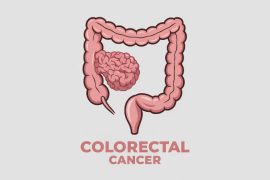Cancer is to a large extent avoidable. Some of them can be detected at their initial stage of growth, treated and cured. Even the last stage of cancer’s progression can be slowed and the pain can be reduced. Though cancer remains the world’s second leading cause of death, there are still many treatment options and drugs available to treat cancer, with many more being studied. The types of treatment chosen depends on the type of cancer one has and how radical it is. Few types will have only one treatment option available. But most people get a combination of treatments. Some are local treatments like surgery and radiation therapy, which are used to treat a specific tumor or area of the body. And, drug treatments such as chemotherapy, immunotherapy, or targeted therapy are often called “systemic” treatments because they can affect the entire body. It completely depends on your doctor to make a reasonable treatment decision, depending upon the type of your cancer and its stage. At the same time, every patient needs to follow some ground rules like acceptance, realistic expectations, beliefs and attitude towards the disease before exploring treatment options. Let’s now dig in deep and learn about the effectiveness and risks associated with surgical cancer treatment.
Surgery is the conventional form of treating cancer. It is very effective in removing the majority of cancer types before their spread to lymph nodes or distant sites, referred to as metastasis. Surgery may be used alone or in combination with other treatments such as chemotherapy or radiation. Surgery may cure cancer if it has not spread to distant locations in the body. But, it is highly impossible to predict every time whether cancer has spread or not with complete surety. Hence, surgeons frequently remove the lymph nodes surrounding the tumor (sentinel nodes) to confirm whether cancer has spread.
The primary aim of surgery in cancer treatment is to eliminate the cancerous tumor from a specific area of the body. Hence, surgery is considered to be highly effective at complete removal of cancer in its initial stage, which is restricted to its area of origin and hasn’t spread to other adjacent or distant parts of the body (Solid Tumors). However, surgery can also be performed to treat cancer that has spread from the primary site or primary tumor to other parts of the body. Typically, a surgery to remove a cancerous tumor lasts 3 to 6 hours depending on multiple factors such as tumor size, tumor location and access to the tumor, surrounding organs, presence of nerves and blood vessels around the tumor, co-morbid conditions and the number of procedures being performed in a single session.
Risks and side effects of cancer surgery
Risk is a part of any surgery. Though technology has made surgery a safe and authentic treatment option, there are always some potential risks or side effects.
Cancer surgery, like any other treatment option, is associated with benefits as well as side effects. However, the type and extent of side effects differ for each patient, depending on the type and cancer location, surgery type, involvement of concomitant treatment like chemotherapy or radiation and the patient’s general health. In many cases, however, the positive effects outweigh the risks or side effects.
Common side effects of surgical treatment of cancer include:
- Pain: It is common to have some pain after surgery.
- Tiredness: Most people feel tired after undergoing surgery, particularly when it involves the chest or abdomen.



- Loss of Appetite: The patient may feel a loss of appetite after surgery. It may be associated with temporary weight loss.
- Swelling surrounding the surgical site: It is natural to experience some swelling as the body’s natural response to injury is inflammation.
- Drainage from the surgical site: In some cases, the fluid that formed at the surgery site drains through surgical wounds. The patient should contact their surgeon if they develop signs of infection like drainage that smells bad, fever, and redness around the wound.
- Bruising surrounding the surgical incision: Bruising is a common occurrence after surgery caused due to some blood leakage from small blood vessels under the skin.
- Numbness at the incision site: Commonly, numbness is because the nerves in the skin are cut at the time of surgery.
- Bleeding: Mostly, when a patient undergoes surgery, they lose some blood which is usually very little and does not affect the body.
- Surgical site infection: It is common to have infections at the surgical site, but it can also occur elsewhere in the body.
- Lymphedema: Collection of lymph in areas around the excised lymph nodes.
- Organ Dysfunction: It happens most commonly when the surgery is done in certain areas such as the abdomen and chest.
- Concerns related to diet causing GI problems like constipation and decreased ability to absorb nutrients from food.
- Change of body image due to the distorted appearance of the body due to the removal of a certain body part.
- Depression: It is a common experience one can feel after surgery.
- Decreased sexual drive especially if surgery is performed for colorectal, prostate or bladder cancers.
- Fertility: It sometimes affects a woman’s ability to maintain a pregnancy and a man’s ability to father a child.



It should be your first call before you decide to have any surgery or any other treatment, that you utterly understand the risks and side effects associated with it. As any type of medical treatment has its risks and side effects. Be sure, you discuss the details of your case with your physician or surgeon before undergoing any treatment so that you can have a better idea about what your risks might be. The most important thing one should consider that the expected positive effects of the surgery outweigh the possible risks.




